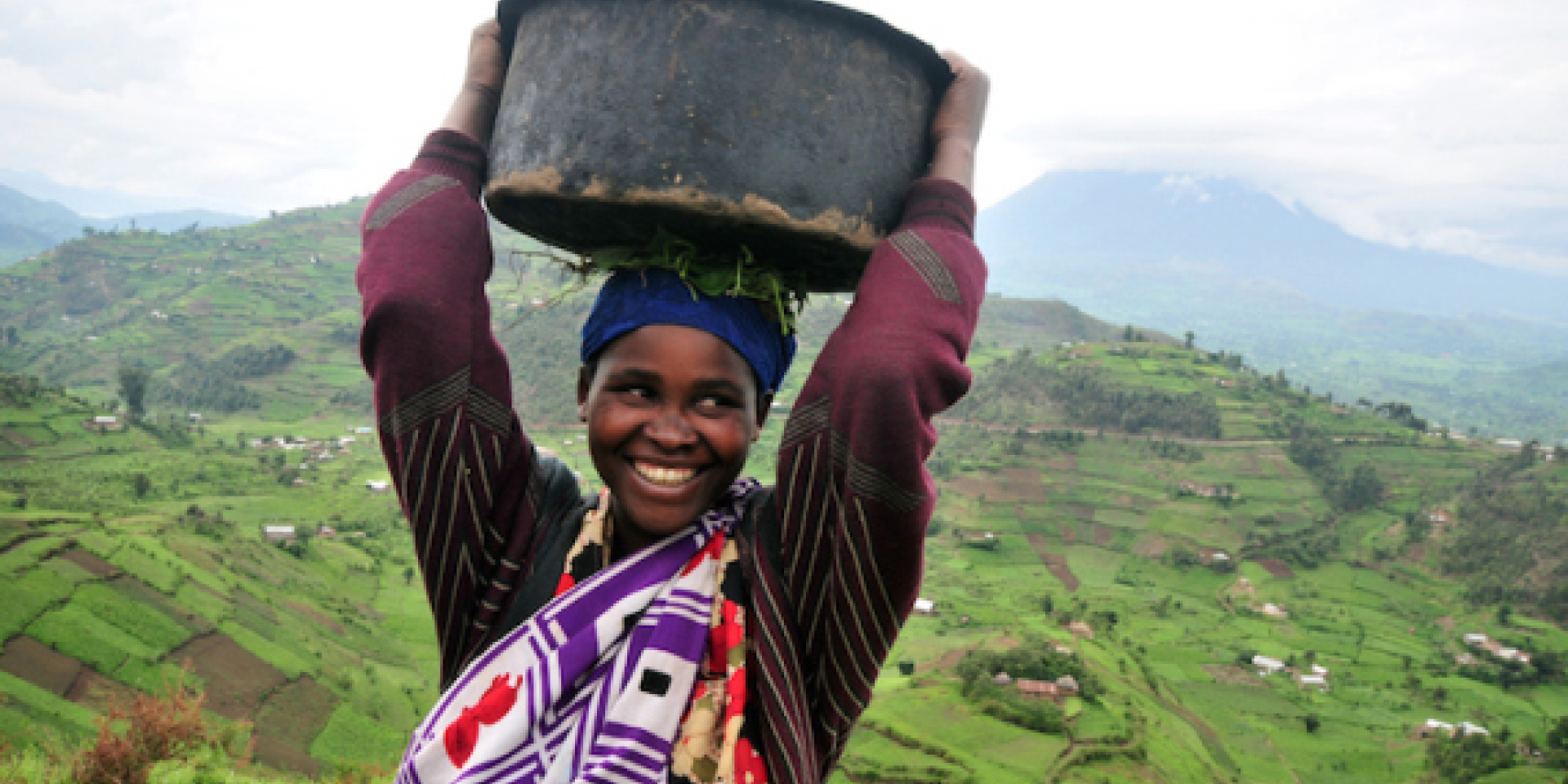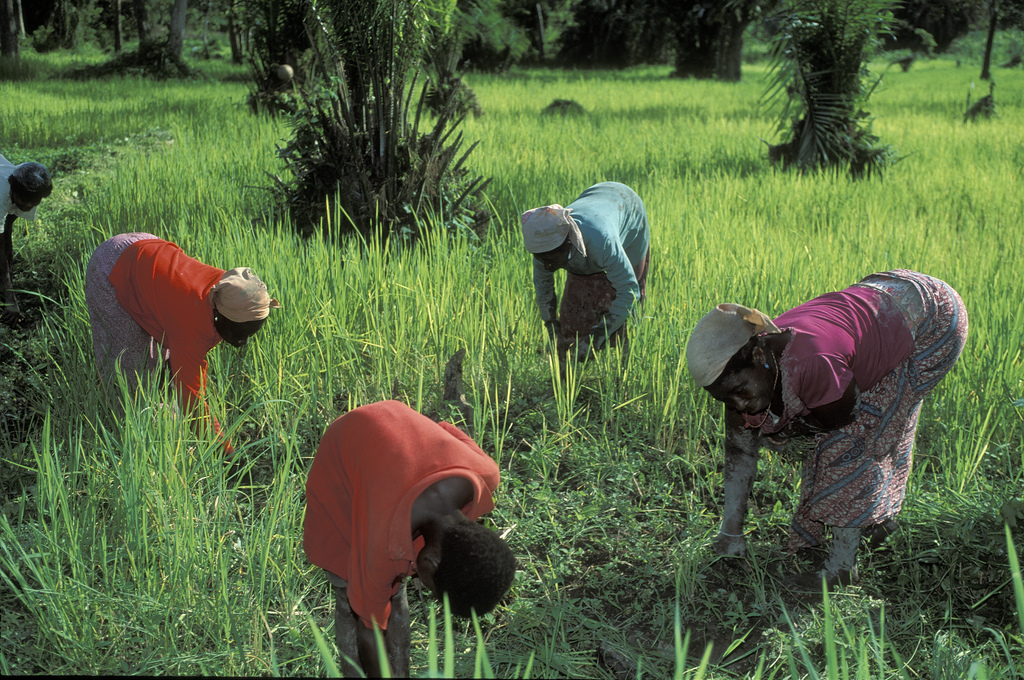Debunking the myth of female labor in African agriculture

A recent study finds women provide an average of 40% of the agricultural labor hours in crop production in sub-Saharan Africa.
This post was first published by the CGIAR Research Program on Policies, Institutions, and Markets (PIM).
Identifying opportunities for productive investments in women
The widely cited “fact” that women in Africa provide 60-80% of the labor in agriculture is the latest of a set of claims that have been called into question about women’s contributions in agriculture based on new data from six sub-Saharan African countries.
These studies offer our most detailed understanding to date of rural economies in Africa. Their rich detail has challenged the development profession to revisit a number of myths and claims about African economies, including those about the role of women in African agriculture.
In a recent paper, authors Palacio-Lopez, Christiaensen, and Kilic use these detailed survey data to calculate the share of labor hours provided by women in crop production. Using plot level data on agricultural labor provided by men and by women in various activities, from land preparation to harvesting, they find that women provide an average of 40% of the agricultural labor hours in crop production across the six African countries, with wide variation across countries and even within countries. This number is obviously much lower than the 60-80% figure mentioned above – although it is closer to the evidence provided in the UN FAO 2010-11 State of Food and Agriculture report that women in Africa make up about 50% of the agricultural labor force.
A recent study finds women provide an average of 40% of the agricultural labor hours in crop production in sub-Saharan Africa.
Interpret with care
First, I want to commend the authors for tackling this issue and using the available data to begin to provide us with better estimates for policy making. We do disservice to our programs and policies when we rely on statements that are not backed up with empirical evidence.
However, we need to be cautious in interpreting these new numbers. First, the authors are careful to note that agricultural labor is defined only as labor in crop production – and indeed, labor used on plots. We still lack data regarding women’s share of labor in broader agricultural enterprises, which would include livestock production and the marketing of output or purchasing of inputs. Important activities such as seed collection and crop drying and storage may not be well documented. Post-harvest processing is also beyond the scope of their estimates. Thus the new figures may not be directly inconsistent with the claims that women provide large shares of labor in agriculture.
Second, these estimates are based on household agricultural production. The underlying surveys identify which household members work in various agricultural activities on each plot. While this may be a good approximation in much of Africa at the moment, this approach will be less relevant in places where the commercial agriculture sector is more important. Many or most larger-scale farms are missed in these surveys.
Third, labor and time use data are notoriously difficult to obtain. Time use studies typically ask people to identify their activities, often hour by hour, for the previous days or week. We expect this to provide a better measure of how people spend their days than asking about the time spent only in particular activities across the seasons.
In the analysis of the six country data, women’s labor shares do not vary based on whether the numbers are reported by men or women, even after controlling for which crops are grown or respondent characteristics such as schooling. This is good – it is hard to know how to interpret the data when men and women report differently. Yet, consistent answers may still be incorrect. To the extent that women are often not viewed as farmers or their tasks are undervalued within the culture, women’s labor may be underestimated, both by men and by the women themselves.
Is a disproportionate focus on women farmers justified?
Focusing on women could not only decrease the gender gaps in the productivity of land managed by men and women, but also could have strong empowerment effects, generating benefits to agricultural production as well as to the health and welfare of households.
The authors conclude that because women only provide 40% of the labor in crop production, there is not support for a disproportionate focus on women farmers to boost agricultural production. But the argument for supporting women farmers should not rest on the claim that they provide the majority of hours worked. Instead, the argument for supporting women farmers is that the marginal impact of targeting women farmers may be high, because they have less access to program benefits, such as extension, inputs, credit, etc. Thus, a program effectively targeting women farmers could have a higher impact on productivity than a similar program that only reaches men.
As the authors note, focusing on women could not only decrease the gender gaps in the productivity of land managed by men and women, but also could have strong empowerment effects, generating benefits to agricultural production as well as to the health and welfare of households.
In addition to providing 40% of the labor in crop production, rural women in Africa are almost exclusively responsible for food processing and preparation, child care, care of the sick and elderly, laundry, gathering water and firewood, and cleaning the house. Any programs that increase their productivity, whether specifically in crop production, agriculture more generally, or their household labor, may have a positive benefit on the welfare of these women and their families.
Ultimately, the issue is not who provides more hours of labor for agriculture. Instead, the question is whether there are high returns to tailoring agricultural technologies and policies to meet the needs of women. This is a much more challenging question for research, but here too we should be looking for empirical evidence, rather than extrapolating from fragmentary facts and anecdotes. With the wealth of household survey data now becoming available, there are real prospects that we can better identify the opportunities for productive investments in women.
About the Author
 Dr. Cheryl Doss is a development economist whose research focuses on issues related to agriculture, assets, and gender, with a regional focus on sub-Saharan Africa. As a Senior Lecturer at Yale University, she has taught widely at the graduate and undergraduate level. Currently she teaches courses on research methods, the economics of Africa, and agricultural development and food security.
Dr. Cheryl Doss is a development economist whose research focuses on issues related to agriculture, assets, and gender, with a regional focus on sub-Saharan Africa. As a Senior Lecturer at Yale University, she has taught widely at the graduate and undergraduate level. Currently she teaches courses on research methods, the economics of Africa, and agricultural development and food security.
Dr. Doss is Gender Lead of the CGIAR Research Program on Policies, Institutions, and Markets, member of the PIM Management Committee, and leader of the PIM research cluster on Sex-Disaggregated Data. See more here>>
Featured image photo credit: Neil Palmer
This post is part of EnGendering Data, a blog on collecting and analyzing sex-disaggregated data to improve the knowledge base on the role of gender in agriculture and food security, maintained by the CGIAR Research Program on Policies, Institutions, and Markets (PIM).
